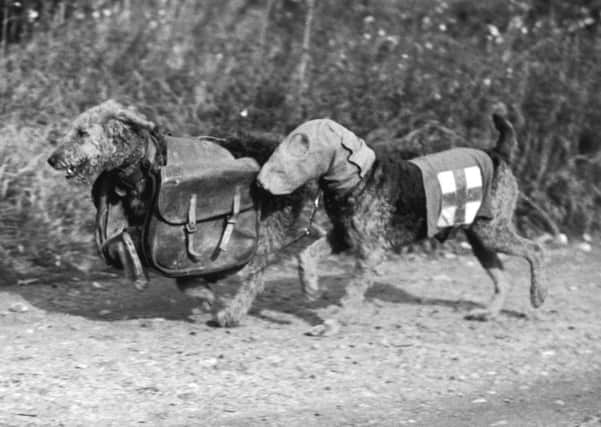Scotland's dogs of war to be commemorated with granite memorial after successful fundraising


The Airedale Terrier Club of Scotland is awaiting delivery of the sculpture, which will feature life-size dogs and their handlers.
The touching tribute to the four-legged troopers will take pride of place in the fishing village of East Haven, near Carnoustie, Angus, - where the dogs of war were trained.
Advertisement
Hide AdAdvertisement
Hide AdSculptor Bruce Walker, from Kirriemuir, Angus has started work on a 30-tonne block of granite that he will transform into the memorial.
Former club chair Margaret Thompson, who is now its life president, said the memorial became possible after a year of fundraising brought in more than £40,000.
Donations for the memorial, which will feature dogs of war on one side, and dogs of peace on another, flooded in from around the world.
Margaret said: “The villagers at East Haven have been right behind us with the whole thing.
“Over the last few months, they even planted poppies on the spot where the statue of the dogs will go.
“A lot of the people there - it was their fathers and grandfathers who actually helped in the training of the dogs.
“At times they had to go and lie out on the beach and the dogs had to go out and find them, so they’re all excited about it coming to their village.”
She will unveil the statue - anticipated in early April - around the time of her 92nd birthday, in recognition of her long association with the club.
Advertisement
Hide AdAdvertisement
Hide AdMargaret added: “My father was one of the people who started it, so there’s been a long connection with my family.
“I was chairperson for about 16 years but I’m a life president and co-ordinator of breed rescue, which finds new homes for any Airedales that need rehomed.
“We’ve got members from all over the world and umpteen from the north of England who say they want to join because their regional clubs ‘don’t offer the same fun that you do’.”
Club secretary Wendy Turner, says the story started with dog-lover and army lieutenant-colonel Edwin Hautenville Richardson.
Richardson became interested in training the dogs at Panbride House in the early 1900s after witnessing how foreign forces used them.
She said: “He’d been watching the Russians and the Germans training the Airedales for war and when he came back he started training them here.
“The first ones he trained he gave to the Glasgow police as official police dogs - two at Maryhill station and two at Queen’s Park station.
“Then he started training the war dogs - the Airedales are the king of terriers, they’re not small and with their tenacity and intelligence they were just what he was looking for, they had the power, the brains and the agility he needed.”
Advertisement
Hide AdAdvertisement
Hide AdThe dogs were initially trained for service in the Red Cross, where they were used to identify casualties and dead soldiers.
Wendy added: “When they went out, if they found a body that still had life about it they lifted something such as a cap and ran back to the stretcher-bearers and guided them out to where the person was.
“Then the Army got interested and had them trained up for sentry duty, putting messages through the trenches.
“They even worked with crates on their backs for carrier pigeons.
“East Haven and Barry locals all joined in to help train them.
“The dogs carried first aid panniers and the locals’ reward at the end of the training were the miniature bottles of brandy in the first aid packs.”
The Army later opened an official war dog training school in Kent, South East England, which processed thousands of Airedales.
